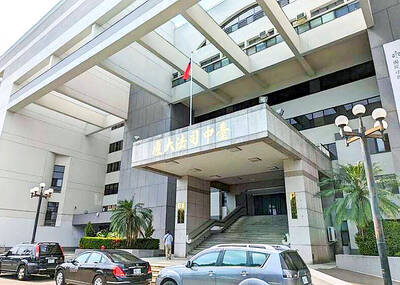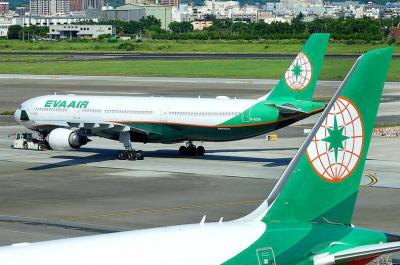The nation’s five telecom carriers yesterday competed to secure frequency blocks on the 3.5 gigahertz (GHz) band on the first day of the nation’s first 5G spectrum auction.
The National Communications Commission had said it plans to release 2,790 megahertz (MHz) of bandwidth for 5G services — 270MHz in the 3.5GHz band, 2,500MHz in the 28GHz band and 20MHz in the 1,800MHz band.
The bandwidth is divided into frequency blocks of 10MHz.
The highest bid for the 3.5GHz frequency band topped NT$26.58 billion (US$871.4 million) and NT$206 million for the 28GHz band, while there were no bids for the 1,800MHz band, NCC data showed.
The auction is to resume at 9am today.
The commission has a new method to facilitate the auction, where the telecoms first bid for the number of frequency blocks they need, NCC Acting Chairman Chen Yaw-shyang (陳耀祥) said.
There are to be 10 rounds of auctioning every day, he said, adding that a mechanism would compel telecoms to bid faster in the 51st and 101st rounds.
After telecoms secure the bandwidth they need, they would negotiate their preferable locations on the frequency band for seven days, Chen said.
Should telecoms fail to agree on the issue, they would enter the next round of auctioning for the bandwidths’ location.
“We hope the auction will end in one to two weeks,” Chen said.
Chen said that the commission had expected telecoms to compete fiercely for the frequency blocks on the 3.5GHz band, based on results of 5G auctions in other nations.
The commission has allocated funds to address the issue of interference that might occur between 3.3GHz and 3.57GHz, as part of the band is used for satellite communications, he said.
Telecoms would have to build more base stations than they did for the 4G system to offer 5G services, Chen said.
“In the initial stage, the number of 5G base stations would not increase too quickly, as telecoms can upgrade 4G base stations to meet demand,” he said.
“Overall, the number of base stations in the 5G era is expected to be three to four times that of the 4G era,” Chen added.
Regarding potential health hazards caused by electromagnetic waves emitted by the stations, Chen said the commission would handle this issue based on international standards, adding that it would work closely with the Environmental Protection Administration on the matter.
“People should not fear using technology as long as the risks are controllable,” Chen said.
As information security would become more important in the 5G era, telecoms should not only submit business plans, but also information security plans to the commission before they start offering the service, he said.
At least three telecoms would secure enough bandwidth to provide 5G services, Chen said.
“I believe that telecoms would set reasonable and competitive prices for 5G service by first consulting the international telecom benchmarks, as well as experiences in other nations,” he added.
Asked whether the commission would limit the funds that would be generated from the auction so as not to raise the operational costs of the telecoms, Chen said that the commission only set a floor price for the auction, adding that it has no way of knowing how high the bids will go.
“I am sure that they would take all factors into consideration when they place the bids,” he said.

The first global hotel Keys Selection by the Michelin Guide includes four hotels in Taiwan, Michelin announced yesterday. All four received the “Michelin One Key,” indicating guests are to experience a “very special stay” at any of the locations as the establishments are “a true gem with personality. Service always goes the extra mile, and the hotel provides much more than others in its price range.” Of the four hotels, three are located in Taipei and one in Taichung. In Taipei, the One Key accolades were awarded to the Capella Taipei, Kimpton Da An Taipei and Mandarin Oriental Taipei. Capella Taipei was described by

The Taichung District Court yesterday confirmed its final ruling that the marriage between teenage heir Lai (賴) and a man surnamed Hsia (夏) was legally invalid, preventing Hsia from inheriting Lai’s NT$500 million (US$16.37 million) estate. The court confirmed that Hsia chose not to appeal the civil judgement after the court handed down its ruling in June, making the decision final. In the June ruling, the court said that Lai, 18, and Hsia, 26, showed “no mutual admiration before the marriage” and that their interactions were “distant and unfamiliar.” The judge concluded that the couple lacked the “true intention of

EVA Airways today confirmed the death of a flight attendant on Saturday upon their return to Taiwan and said an internal investigation has been launched, as criticism mounted over a social media post accusing the airline of failing to offer sufficient employee protections. According to the post, the flight attendant complained of feeling sick on board a flight, but was unable to take sick leave or access medical care. The crew member allegedly did not receive assistance from the chief purser, who failed to heed their requests for medical attention or call an ambulance once the flight landed, the post said. As sick

INDUSTRY: Beijing’s latest export measures go beyond targeting the US and would likely affect any country that uses Chinese rare earths or related tech, an academic said Taiwanese industries could face significant disruption from China’s newly tightened export controls on rare earth elements, as much of Taiwan’s supply indirectly depends on Chinese materials processed in Japan, a local expert said yesterday. Kristy Hsu (徐遵慈), director of the Taiwan ASEAN Studies Center at the Chung-Hua Institution for Economic Research, said that China’s latest export measures go far beyond targeting the US and would likely affect any country that uses Chinese rare earths or related technologies. With Japan and Southeast Asian countries among those expected to be hit, Taiwan could feel the impact through its reliance on Japanese-made semi-finished products and